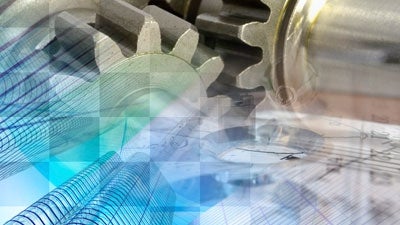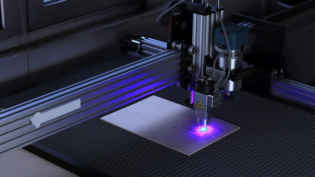
An old, familiar story line is returning to the technology industry. Yes, there’s a bit of a 1970s Jobs and Wozniak throwback here.
That scenario got lost for a while—the whole idea of a tinkerer in their garage or a student at a university creating an entirely new product (or even industry) and becoming a wild success story. Not just creating software and iPhone apps, but hands-on product innovation.
It’s happening again. All thanks to a leveled playing field, from crowdfunding to low-cost hardware, software, and even production. A startup or entrepreneur can once again compete with the “big guys” to bring innovation to market—even faster sometimes than ever dreamed before.
But does it mean that huge, “traditional” manufacturing companies are on a path to extinction? That the GEs, Boeings, Toyotas, and 3Ms of the world will be taken down by new, nimble startups? Umm, not so fast . . . .
The fact is big manufacturing companies will continue to exist. They exist for a reason: Manufacturing is a darn complex business. The expertise, resources, best practices, facilities, and supply chains required to be successful in manufacturing—especially on a global scale—are not built overnight, and cannot be profitably orchestrated by a small-team operation out of somebody’s garage.
And there is the issue of brand recognition, which for some types of products is a big deal. Think about it: Would you feel more comfortable getting a pacemaker from a couple of brilliant students from MIT operating out of a small shop in Boston, or from Medtronic, Inc., which has been making pacemakers for more than 50 years?
Related Article: 5 Reasons the Manufacturing Industry is Ready for a Boom
But I do believe that the nature of the manufacturing company will change. At the core of this change is the way these firms perform one of the critical functions of any company: innovation. And both entrenched companies and startups have a lot to learn from one another.
What Big Companies Can Learn From Startups: Staying Nimble When You’re, Well, Big
See, one of the problems of being big is it’s very hard to remain innovative and pivot on new ideas quickly and easily. Size—and the bureaucracy associated with it—stifles innovation. This wasn’t too much of a problem in the past. Things moved slowly, and as long as the company managed to control costs and increase outputs (and introduce the occasional new product), it would be okay.
But the pace of technological change and demand shift have accelerated, to a point where being big is becoming a liability, and controlling costs and productivity is no longer a sufficient strategy to stay afloat.
Companies need innovation—and they need it fast. Add the fact that small manufacturing startups—empowered by the democratization of manufacturing—are now significant players that can bring innovation better and faster, and the challenge is really on. The economies of scale are being disrupted, and the value proposition of being the largest kid on the industry block is eroding.
But, to be fair, there are also problems of being young and small. Most hardware startups have great ideas but very little expertise in manufacturing and business.
They struggle to go from prototype to (profitable) commercial production. They are caught like deer in headlights by the wild success of their Kickstarter campaigns—many exceeding the target fundraising amounts by the thousandfold! They find themselves having to make decisions about where to manufacture their products (China? Oklahoma?); which materials and production processes to use; how to build an efficient supply chain; and how to price, market, and distribute their products. Sometimes they just can’t meet the demand.
In other words, they find out the hard way that hardware is hard.
So there’s a pretty interesting innovation opportunity here. Why not combine the manufacturing expertise at which established companies are so good, with the innovation/”fire-in-the-belly” of startups? I think that is precisely where things are headed. There will be more and more innovation coming from outside the walls of “established” manufacturing companies, and the best companies will embrace this new reality and adapt to be less monolithic and closed.
What Could a Little Hardware Startup and a Fortune 500 Company Teach Each Other? A Lot.
Hardware startups—empowered by the democratization of manufacturing—can introduce innovation that big companies couldn’t. And that’s because those larger companies didn’t react in time, didn’t have the talent in-house, completely missed the boat, or didn’t consider the innovation worth the investment.
Meanwhile, the startups are the cool kids, the disruptors, the darlings of the media, and the ones attracting investment dollars. They use creative approaches such as crowdfunding, crowdsourcing, open-source hardware, manufacturing-as-a-service, social networking, communities, and agile product development. And they waste no time or resources building their own IT infrastructure in-house. Everything they use is in the cloud.
Now, these hardware startups will take different paths (the ones that survive, of course). Some will be noticed by a large company that will make them an offer they can’t refuse. It’s not your usual suspects, but companies like Google, Microsoft, Amazon, or Facebook. For example, Google is making new forays into hardware products with acquisitions like Nest, Boston Dynamics, and Deepmind, and Facebook is doing the same with the acquisition of Oculus VR.
Other startups will strike out on their own and grow, and maybe someday challenge or even displace an incumbent. We are already seeing examples of these companies that didn’t even exist a few of years ago, such as Pebble, Square, Leap Motion, Modbot, GoPro, and Lightning Motorcycle. And yet others will deliberately stay small and nimble to better serve a niche or an under-addressed market.
On the other hand, established companies will recognize that their next big idea may be outside their walls and will make organizational and process changes to be able to capture that.
They will become more permeable to external innovation and more comfortable involving people (inventors, enthusiasts, customers) outside the company into their product-development processes. They will implement some best practices from startups and challenge their focus on profit and risk reduction and adopt a culture of innovation. They will start their own internal accelerators and incubators. They will have to change the way they make decisions, from decision by bureaucracy, decision by PowerPoint, persuasion, position, and power to decision by experiment.
Innovate or Die
One thing rings true: No company is ever safe, big or small. Titans of industry have fallen to much smaller companies. And, of course, vice versa. But one truth is the fact that big companies will always be around.
While there’s incredible excitement around the hardware-startup boom, one thing must be kept in mind. Booms always happen. There’s nothing new there. This time around, a lot of lessons and key approaches to business and innovation will and must change. The “new innovation order” isn’t about small firms making big companies disappear from the face of the earth; it’s about how each play in the innovation landscape that will transform everything.
This article was originally published by Line//Shape//Space














